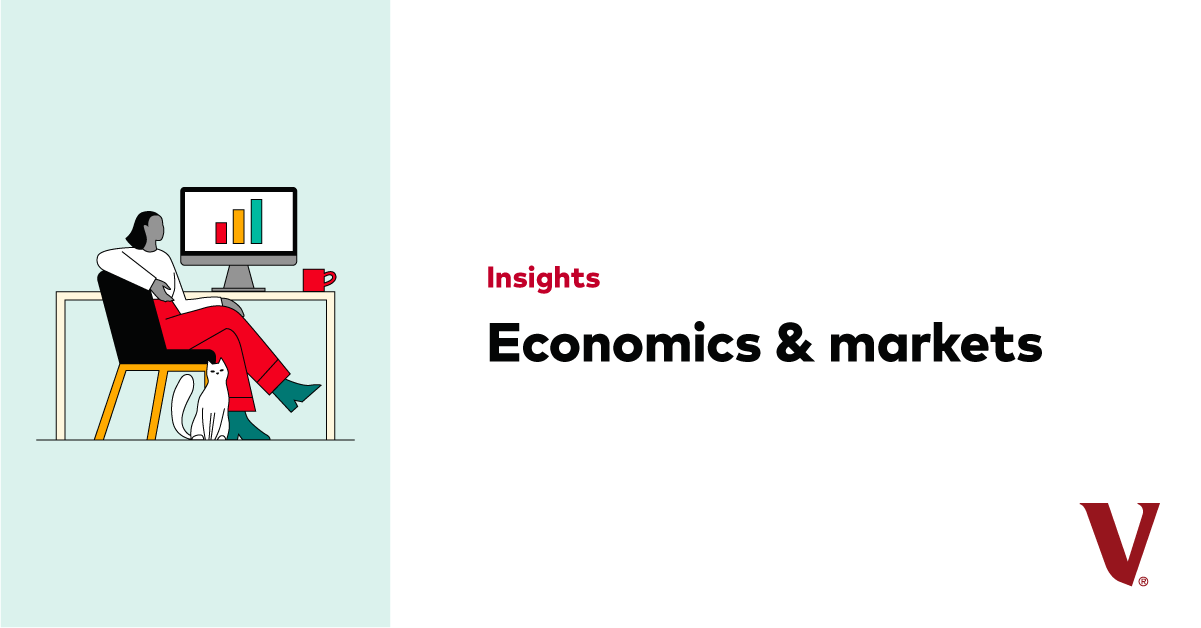Expert insight
How low ETF fees benefit investors over time
May 07, 2025
Recent expense ratio cuts on dozens of Vanguard ETFs highlight our reputation as a provider of low-cost funds. They also represent an opportunity to remind investors of a critical variable in measuring investment costs—namely that the savings stemming from low expense ratios only grow over time.
Measuring the total cost of ownership (TCO) for an ETF can seem as simple as adding the expense ratio and trading costs (i.e., bid-ask spreads). But that ignores time. In other words, the longer the holding period, the more a relatively low ETF expense ratio becomes a deciding variable in cost.
Spreads are still important, especially for shorter holding periods. But there comes a point when the expense ratio becomes more important than spread over the long term. When comparing the TCO of competing ETFs, the moment when a low expense ratio becomes more determinative than a tight spread is considered the break-even point.
But when is that point reached? It may be sooner than investors think.
Real-world examples
With that background in mind, let’s compare the TCO on three pairs of fixed income ETFs—one for Treasuries, another for corporate bonds, and the third from the municipal bond market. Importantly, each of the Vanguard ETFs in the three comparisons had their expense ratios lowered in February.
Both the entry spread and the exit spread are included—the costs of a round-trip trade. That’s because investors are paying the spread both times if they’re trading in and out of an ETF.
VGLT vs. TLT
We’ll start by comparing two popular Treasury ETFs—iShares 20+ Year Treasury Bond ETF (TLT) and Vanguard Long-Term Treasury ETF (VGLT), which offers exposure to all the longer end of the Treasuries market spanning from 10–30 years.
The round-trip breakeven here is 15 days. On February 1, 2025, VGLT lowered its expense ratio to just 0.03% or 3 basis points (bps), while TLT costs 15 bps per year. The trading spread on VGLT is 1.8 bps—only 0.6 bps wider than TLT’s spread of 1.2 bps.1
In other words, holding VGLT for more than 15 days means VGLT’s TCO (expense ratio plus trading spread) is less than that of TLT. Holding periods of 15 or fewer days favor TLT, but after that, VGLT becomes the less expensive of the two ETFs, and its TCO advantage only grows with time.
Total cost of ownership: VGLT vs. TLT
Source: Expense ratio data from Vanguard, as of February 1, 2025. All other data from Morningstar, as of January 31, 2025.
VCIT vs. LQD
Shifting to the realm of corporate bond ETFs, let’s compare Vanguard’s very liquid and low-cost investment-grade corporate bond ETF, Vanguard Intermediate-Term Corporate Bond ETF (VCIT), and the highest-volume investment-grade credit ETF, iShares iBoxx $ Investment Grade Corporate Bond ETF (LQD).
VCIT includes intermediate-term bonds between five to 10 years of maturity, and LQD includes bonds with three-plus years of maturity and a tilt toward more liquid bonds. Despite these differences, they’re similar in terms of risk, with both having intermediate durations.
The breakeven in this comparison comes after an eight-day holding period. VCIT’s bid-ask spreads are a tad wider than LQD’s—VCIT’s are 1.26 bps and LQD’s 0.94 bps. But because of VCIT’s recently lowered expense ratio of 0.03%, versus 0.14% for LQD, VCIT’s lower TCO kicks in relatively quickly—this time within only eight trading days.2
Total cost of ownership: VCIT vs. LQD
Source: Expense ratio data from Vanguard, as of February 1, 2025. All other data from Morningstar, as of January 31, 2025.
VTEB vs. MUB
Let’s now turn our focus to a pair of muni bond ETFs—a low-cost, across-the-muni-yield-curve national fund, Vanguard Tax-Exempt Bond ETF (VTEB), and iShares National Muni Bond ETF (MUB), two of the most liquid muni bond ETFs on the market.
The two ETFs are similar in exposure and in their risk profiles.
VTEB has an expense ratio of 0.03%, but this time, MUB’s expense ratio is much closer at 0.05%. Although they both trade with the same spread of one penny, VTEB’s lower share price means it trades at 2 basis points—wider than MUB’s spread of just above 1 bps. The round-trip breakeven comes out to be 120 days.3
That’s around four months, and while that may sound like a long time compared to the previous example, it’s also an opportune time to remind investors that investing is a long-term discipline. Moreover, munis are not a sub-asset class where investors tend to rotate in and out, but rather one in which they buy and hold to generate tax-exempt income. The lower expense ratio ensures that they can keep more of that income over the long term.
Total cost of ownership: VTEB vs. MUB
Source: Expense ratio data from Vanguard, as of February 1, 2025. All other data from Morningstar, as of January 31, 2025.
Low cost and liquidity: Double delight
As the comparisons show, the advantages of a low expense ratio are magnified over time. Still, as these examples show, investors keen on keeping their trading costs just as low as their holding costs don’t have to compromise. In many cases, they can have both low expense ratios and tight bid-ask spreads.
1 Notes: Of crucial importance to the VGLT-TLT spread calculation is that the net asset value (NAV) of one VGLT share was $55.60 as of January 31, 2025, while the NAV of one TLT share was $87.84 on the same day. Both products average a time-weighted bid-ask spread of $.01.
Sources: Trading-spread data from Bloomberg, as of January 31, 2025; ETF NAV data from FactSet
as of January 31, 2025; expense ratio data from Vanguard, as of February 1, 2025.
2 Morningstar, Inc. as of January 31, 2025.
3 Expense ratio data from Vanguard, as of February 1, 2025. All other data from Morningstar, as of January 31, 2025.
Notes:
There may be other material differences between products that must be considered prior to investing.
For more information about Vanguard funds and ETFs, visit vanguard.com to obtain a prospectus or, if available, a summary prospectus. Investment objectives, risks, charges, expenses, and other important information are contained in the prospectus; read and consider it carefully before investing.
Vanguard ETF Shares are not redeemable with the issuing Fund other than in very large aggregations worth millions of dollars. Instead, investors must buy and sell Vanguard ETF Shares in the secondary market and hold those shares in a brokerage account. In doing so, the investor may incur brokerage commissions and may pay more than net asset value when buying and receive less than net asset value when selling.
All investing is subject to risk, including possible loss of principal. Diversification does not ensure a profit or protect against a loss.
Bond funds are subject to the risk that an issuer will fail to make payments on time, and that bond prices will decline because of rising interest rates or negative perceptions of an issuer’s ability to make payments.
Although the income from municipal bonds held by a fund is exempt from federal tax, you may owe taxes on any capital gains realized through the fund’s trading or through your own redemption of shares. For some investors, a portion of the fund’s income may be subject to state and local taxes, as well as to the federal alternative minimum tax.
U.S. government backing of Treasury or agency securities applies only to the underlying securities and does not prevent share price fluctuations. Unlike stocks and bonds, U.S. Treasury bills are guaranteed as to the timely payment of principal and interest.


